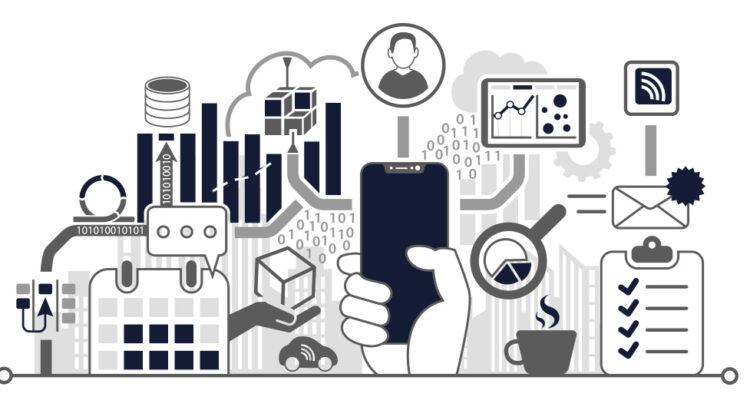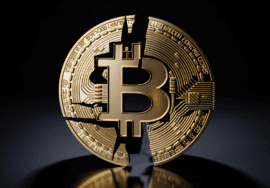

Mass Digitization phenomenon
Opinion by: Arsim Ajeti
editor in chief /thejournalbiz.com
(*special thank you note to Arben Selimi)


-
Consumers around the globe adjust to the new normal
-
Ongoing trend and significant change on a global scale
-
NFT craze has taken the online market by storm!
How does that actually look today, in midst of a global crisis, we ought to highlight the current trend of NFT craze, the digital market just got to another level during the pandemic! Only few days ago a ‘tweet’ from the founder of the social network Twitter, Jack Dorsey was sold for 2.9 $ million, as non-fungible token or NFT, while a digital piece‘ EVERYDAYS: THE FIRST 5000 DAYS’ from the artist ‘Beeple’ was auctioned and sold for 69$ million by Christies.
As long as investors feel confident that these digital tokens will have tremendous value in the future, then drawing a parallel between traditional collector’s habits, with a new digital phenomenon, serve us to contemplate, that the time from acquiring the personal items in the physical form, into a digital one is a natural transition, the current trend will only increase, as currently represents a unique opportunity to the future markets’ said Noah Davis, a specialist in post-war and contemporary art
To dig deeper, on how exactly, in the midst of the global crisis, we have a ‘digital’ market madness, we must understand that the long pandemic crisis, with no end in sight contributed enormously towards unprecedented economic stagnation, as well as human isolation, that made us look into alternatives or solution to the crisis, internet emerged our savor, towards the new virtual reality!
Radical changes, from how we conduct our daily work, business, and life itself all that became part of the Internet, as applications such as Zoom, for work& studies Netflix for entertainment, Reddit for trading tips, became our daily traits that alone marked a significant behavior change, along with the financial phenomenon known as bitcoin (BTC)!
But how exactly did Bitcoin rise exponentially during the global crisis!? ..we must look into the fact that there is a lot of fiat currency floating free, as a result of fiscal stimulus packages for economic recovery, while there is very little capital turnover, R&D as a result of the virus stagnation, that affected everything in production and global supply chain. On the other hand, the effect of inflation is rising, as CNBC reports Investors now fear the risk of Inflation & FED’s printing power more than the virus itself
As a consequence, today Bitcoin reached astronomical value, a rise only few predicted, with a current value of 2 trillion market cap, as Ethereum hits new record price-wise, according to CNBC but how did we end up here !? this answer could be partially found also on the generational change and rapid digital development. According to Mckisney & Co the Internet, and its role in how generation Z behave towards new digital trends, their role into the market and investment, or as it is known ‘portfolio diversification’ no longer Gen Z considers Gold, as an investment with intrinsic value but bitcoin, that was identified as a preferred asset in times of crisis
Furthermore, many fintech institutions such as Morgan Stanley, Goldman Sachs, have started to treat BTC as ‘digital gold’ and there is no doubt that companies that have invested a percentage of their capital, Tesla, MicroStrategy, Square, Coinbase only add towards the mass adoption, while weeks ago, Elon Musk tweeted that now we can buy a Tesla electric car with bitcoin
However, many traditional investors have bought Gold, according to Forbes the value of gold has increased, from $ 1200 before the pandemic, to the highest value ever recorded on July 20, reached $ 2000, as banks and investors piled up behind financial balancing in the event of inflation, or worse, hyperinflation!
As it turns out, hyperinflation generally coincides with wars and a series of ill-advised and inflammatory fiscal policy decisions, as an analogy, the curious case of the former Yugoslavia, during the 90’s ex Socialist republic was in midst of political turmoil, citizens from the former republics had converted the national currency ‘dinar’ into Gold, as the country was going into a worst existential crisis.
Steve H. Hanke, professor at Johns Hopkins University and Senior fellow at CATO institute claims that hyper-inflation reached up to. 313,000,000% and this has been one of the unique cases where the printing of national currencies (dinar) has produced an unprecedented social crisis and population impoverishment.
Today, we have a new transition on a digital forefront, not only online payment but the cryptocurrency as a means of investment and as a medium of exchange is slowly changing the beliefs worldwide. Leading economies have set sight on the shift towards the general sentiment, as the digitalization of currencies, has begun, According to Wall Street Journal, China is amongst the first to implementation digitizing the national currency the first consumers testing of currency (yuan) in the digital version.
Not only China, but the EU central bank has recently announced that it is working to create a digital euro — while US State Reserve officials have left open the possibility of digital dollar implantation within the year
Undoubtedly, the effect and role of the pandemic in digital transformation is undeniable, and has only accelerated the trend of digital transition, is this the end of physical cash and the start of a cashless society!?! Will smartphones dominate consumers behavior and leap us onto decentralized virtual society, only time will tell, what the future holds in our post-pandemic world









